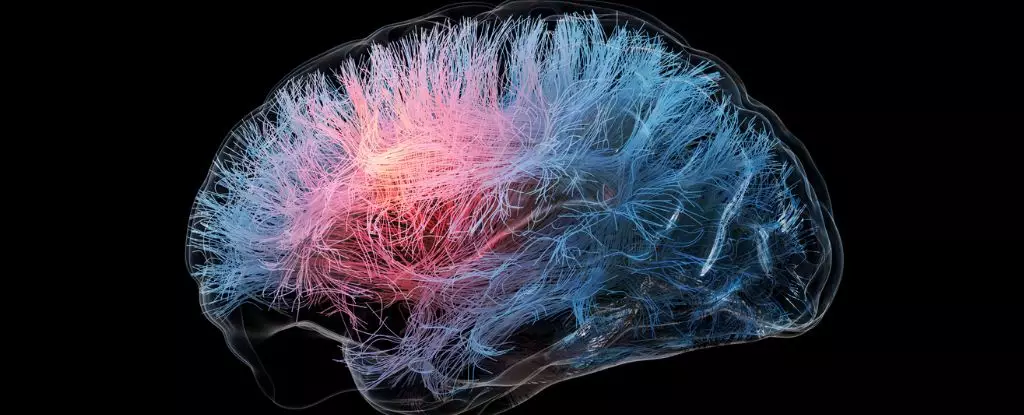Alzheimer’s disease, a relentless affliction that robs individuals of their autonomy, has seen a surge of promising drug therapies aimed at extending the life and, more importantly, the quality of life for those afflicted. One of the most noteworthy of these recent developments is lecanemab, an intravenous drug that claims to slow cognitive decline by a striking 27 percent compared to a placebo. However, beneath this seemingly positive development lies a troubling truth: the potential efficacy of such treatments is alarmingly skewed based on gender. New clinical assessments reveal that female patients may not benefit from lecanemab in the same way male patients do, raising critical questions about the implications of such disparities in a field that cannot afford to sideline any segment of the population.
The Rift in Clinical Observations
While the phase 3 clinical trial called CLARITY AD bolstered some hope for those fighting this debilitating disease, it also uncovered a significant gender gap. The numbers indicate that while males experienced a substantial 43 percent slowing of cognitive decline, females reported a mere 12 percent. This disparity, characterized as non-significant in statistical terms, leaves a considerable segment of Alzheimer’s patients—who, notably, are predominantly female—potentially at a disadvantage. This reality prompts us to scrutinize whether we are genuinely progressing in the medical field or simply repeating historical oversights that have allowed gender biases to persist unchecked.
Critics of the prevailing research methodologies have pointed out that the biochemistry of female brains and their response to drug compounds may be radically different from their male counterparts. Neuroscientist Marina Lynch from Trinity College highlights that up until recently, clinical studies have largely failed to prioritize sex as a stratifying factor. This oversight indicates a systemic bias that risks compromising the health outcomes of women, who represent two-thirds of the Alzheimer’s patient population.
Underlying Mechanisms and their Implications
What compounds the issue further is the complexity of Alzheimer’s pathophysiology and its relation to sex differences. The mechanisms responsible for the formation and clearance of amyloid plaques—deposits long thought to underlie Alzheimer’s pathology—may be more nuanced than previously understood. With alarming evidence suggesting that a significant third of patients diagnosed with Alzheimer’s show no amyloid plaques postmortem, the reliance on these markers as definitive indicators for drug efficacy becomes questionable.
Moreover, the potential influence of sex hormones and sex chromosomes on amyloid pathology prompts a radical re-evaluation of our approach to treatment. If lecanemab and similar therapies operate differently in female and male brains, why are we still treating them with a one-size-fits-all methodology? This is not merely a theoretical concern; it’s an urgent call to action for a more gender-inclusive research paradigm that regards women not as afterthoughts in clinical studies but as pivotal participants in understanding and treating the disease.
A Call for Change in Research Practices
Despite the compelling arguments for restructuring research priorities, the landscape remains largely unchanged. Alarmingly, it was revealed that, in 2019, only 5 percent of neuroscience and psychiatry studies considered sex as a variable, underscoring a profound oversight in how we address conditions like Alzheimer’s. The call for a shift in this approach is not just academic; it holds real-world implications that affect the lives of millions.
Addressing the biased frameworks under which Alzheimer’s research has thus far operated is imperative. The medical community must take deliberate steps to foster investigations that explore specific drug interactions based on sex and prioritize the inclusion of both genders in clinical trials. Only then can we hope to attain results that are equitable and clinically relevant to all patients grappling with the looming threat of cognitive decline.
The Path Forward: A Unified Front
The existing gender biases in Alzheimer’s research threaten to exacerbate the burgeoning health crisis among women, who are already disproportionately affected by the disease. The medical community must collectively champion the cause of gender inclusivity in research, not only for ethical motives but also for the tangible health benefits that a more comprehensive understanding of Alzheimer’s could yield.
As the debate continues, it is essential to recognize that advancing our understanding of Alzheimer’s requires unwavering commitment to equality in scientific research. Acknowledging and addressing these disparities may hold the key to unlocking effective treatments that can restore a modicum of independence to those on the neurological decline. We cannot afford to overlook any patient demographic in our quest for effective therapies; the stakes are simply too high.



Leave a Reply